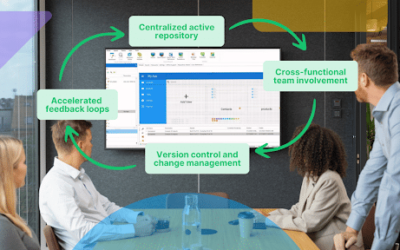LANSA has long known that developing enterprise apps can be complicated and complex. While the allure of low-code has always been to easily develop apps with minimal coding, it was never truly able to create complex enterprise apps without some traditional coding help. Our competition is finally figuring out what LANSA has known all along—you need to be able to code in your low-code solution. However, in other low-code platforms, that coding is done outside the IDE, in other languages, on other platforms. Why develop on multiple platforms when you can code an entire app in one IDE—Visual LANSA?
A recent article on TechRadar stated, “Low-code is not enough,” and “By combining the speed and efficiency of low-code development, with the expressiveness and capabilities of traditional development, customers of any size are capable of tackling the most complex applications.” It is for this very reason that Visual LANSA has used a hybrid low-code approach (combination of traditional coding and low-code in one IDE) to app development from the start. We understand the needs of the developers, and that is why we offer several development tools directly inside our IDE. Use low-code when it makes sense, and write code when you need more flexibility. Knowing what developers need to create apps that are essential for core business is what makes Visual LANSA a powerful development tool.
Cons of traditional low-code:
- Several different tools needed for one application
- Added maintenance by having parts of the app in different languages, on different platforms
- Increase in development times by writing code in several platforms for a single app
Pros of Visual LANSA’s hybrid low-code:
- Low-code and traditional coding available inside the IDE
- One development platform for all coding and maintenance
- Developers equipped with the proper tools in a single location
True low-code platforms have fallen short of delivering exactly what businesses need in core apps. In response, companies have had to use traditional coding to create the functionality not offered by low-code. And while low-code platforms continue to tout their ease of use and speed of app development, they often neglect to mention the extra steps needed to create core business apps. These extra steps can be costly and time consuming as well as place an additional burden on developers already struggling to keep up with app demand.
When using a traditional low-code platform for app development and adding functionality with external programs created in traditional languages, several drawbacks occur. One, there are now apps created in different languages that need to be maintained with different tools. This adds cost and time to not only app development but to maintenance and any app updates. Two, developers need to be familiar with several development tools and must bounce around to finish a single app. Time that was saved in low-code is now lost as developers switch tools to complete an app.
The Visual LANSA Hybrid Low-Code Solution
With Visual LANSA, you can create an entire complex enterprise application without ever leaving the IDE. By using a combination of low-code and LANSA’s own development language, developers have access to all the tools needed to develop apps in one single location. Not only does using the best tool for the job accelerate app development, it also means integrations are easier and more convenient as several options are available directly inside the IDE.
App development is already a complex task, and adding more tools and languages only adds to the complexity. Visual LANSA can reduce the complexities of app development and increase the efficiency of your developers by simply providing all the tools they will need in a single convenient location. Choose the right tool for the job without leaving the IDE.
LANSA takes enterprise application development efficiency to a level beyond what traditional low-code development platforms offer. By allowing developers to code directly inside our low-code platform, developers become more efficient and application development is streamlined—meaning apps are developed faster and are better suited to handle the complexities of core business applications. Read more about the advantages of being able to code inside a low-code solution here or download a free trial here and experience hybrid low-code first hand.


























